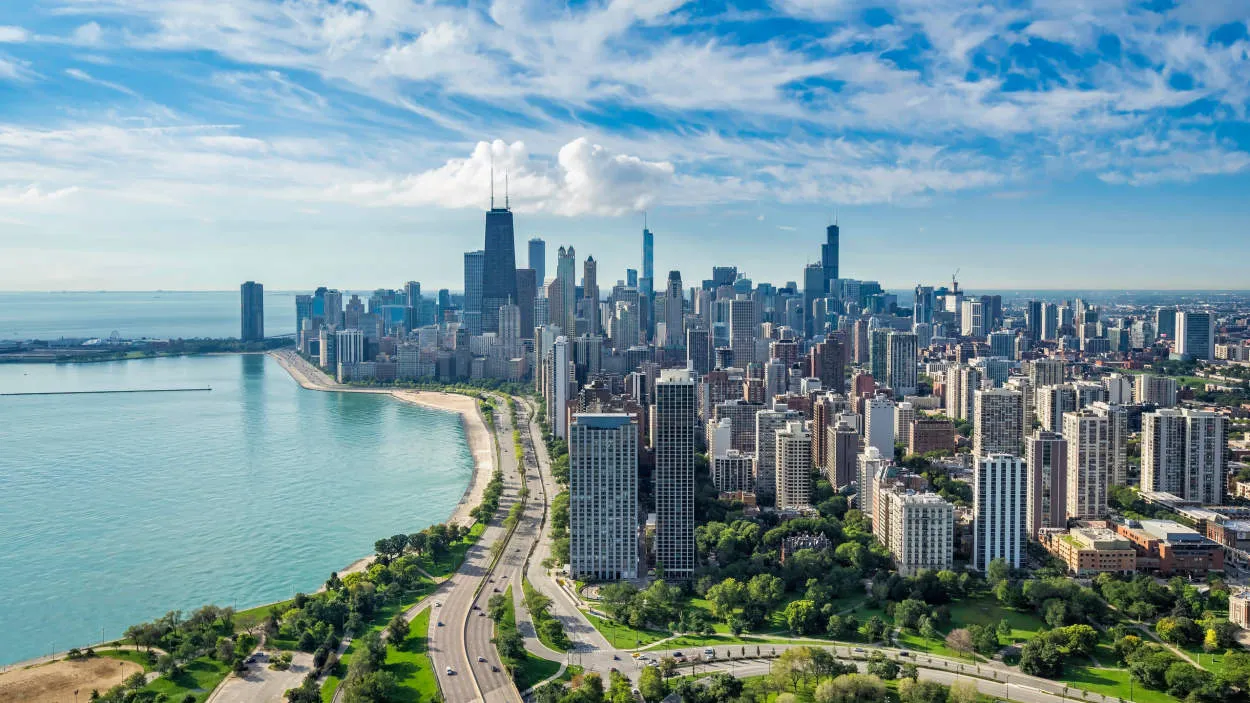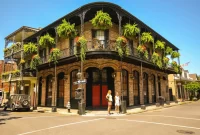Discover the architectural wonders that dominate the breathtaking skyline of Chicago and go beyond. From iconic skyscrapers like the Willis Tower and the John Hancock Center to hidden gems like the Aqua Tower and the Robie House, this city is a haven for architecture enthusiasts. Embark on a journey through the rich history and groundbreaking designs that have shaped Chicago’s skyline into a modern marvel.
The Iconic Chicago Skyline
When it comes to architectural marvels, few cities can rival Chicago. The iconic Chicago skyline is a visual testament to the city’s rich history and innovative spirit. From towering skyscrapers to iconic landmarks, there is no shortage of impressive structures in the Windy City.
One of the most recognizable features of the Chicago skyline is the Willis Tower (formerly known as the Sears Tower). Standing at a staggering height of 1,450 feet, it held the title of the tallest building in the world for 25 years. Today, it remains a symbol of Chicago’s architectural prowess and serves as a major tourist attraction.
Another standout in the city’s skyline is the John Hancock Center, which features a distinctive X-shaped structure. With its observatory on the 94th floor, visitors can enjoy breathtaking panoramic views of the city and Lake Michigan. The sleek and modern design of the building is a testament to Chicago’s commitment to cutting-edge architecture.
Chicago’s skyline is also home to the Trump International Hotel and Tower, known for its sleek glass facade and prominent riverfront location. The building’s striking design has become an integral part of Chicago’s architectural identity.
In addition to these iconic structures, Chicago’s skyline is dotted with various other architectural gems. The Aqua Tower, designed by renowned architect Jeanne Gang, stands out with its wavy balconies that resemble rippling waves. The Tribune Tower, with its gothic-inspired design and ornate detailing, is another must-see for architecture enthusiasts.
Beyond the skyline, Chicago continues to push the boundaries of architecture. The city’s diverse neighborhoods showcase a mix of architectural styles, from the historic brownstones of Lincoln Park to the sleek modernism of the West Loop. Exploring these neighborhoods reveals the depth and breadth of Chicago’s architectural wonders.
In conclusion, the iconic Chicago skyline is a testament to the city’s architectural brilliance. From towering skyscrapers to unique and innovative designs, it showcases the rich history and ongoing commitment to pushing boundaries. Exploring the skyline and beyond offers a captivating journey into Chicago’s architectural marvels.
Architectural Gems: Frank Lloyd Wright’s Legacy
Frank Lloyd Wright, one of America’s most renowned architects, left an indelible mark on the architectural landscape of Chicago and beyond. His innovative designs and visionary approach revolutionized the field of architecture, inspiring generations of architects and captivating admirers worldwide.
Prairie Style: A Harmonious Blend of Nature and Structure
One of Wright’s signature architectural styles is the Prairie School, characterized by its horizontal lines, low-pitched roofs, and integration with the surrounding landscape. Inspired by the vast prairies of the Midwest, Wright sought to create spaces that harmoniously coexisted with nature, blurring the lines between indoor and outdoor environments.
Robie House: A Timeless Masterpiece
Among Wright’s most iconic works is the Frederick C. Robie House, located in the Hyde Park neighborhood of Chicago. Completed in 1910, it exemplifies the essence of Wright’s Prairie Style, with its horizontality, geometric patterns, and emphasis on natural materials. The Robie House stands as a testament to Wright’s genius, captivating visitors with its timeless beauty.
Fallingwater: A Cantilevered Wonder
Outside of Chicago, Wright’s influence can be witnessed in his remarkable creation known as Fallingwater. Situated amidst the lush forest of Pennsylvania, this architectural marvel effortlessly integrates with its surroundings. The daring cantilever design, where the house extends over a cascading waterfall, showcases Wright’s ability to push the boundaries of conventional architecture.
Guggenheim Museum: A Spiraling Masterpiece
Wright’s inventive spirit extended beyond residential architecture to public buildings as well. The Solomon R. Guggenheim Museum in New York City stands as a shining example of his genius. Its spiral design, with a ramp that gradually ascends through various exhibition levels, challenges the traditional museum layout and provides visitors with a unique and immersive art experience.
Legacy Preserved: Appreciating Wright’s Contributions
Frank Lloyd Wright’s architectural legacy continues to inspire and captivate individuals from all walks of life. His innovative concepts, emphasis on harmony with nature, and daring designs have left an indelible mark on the world of architecture. Exploring the architectural gems he left behind in Chicago and beyond provides a glimpse into the genius of this visionary pioneer.
Riverwalk: Exploring Chicago’s Urban Oasis
Chicago’s Architectural Marvels: Skyline and Beyond offers visitors a glimpse into the city’s renowned architecture and stunning skyline. One of the standout attractions in this concrete jungle is the Riverwalk, a vibrant urban oasis nestled along the banks of the Chicago River.
The Riverwalk stretches for 1.25 miles, providing pedestrians with a scenic pathway to explore and discover hidden gems within the city. Here, visitors can immerse themselves in a diverse array of activities, from strolling along the riverbanks to enjoying a waterfront dining experience.
As you venture along the Riverwalk, be prepared to be captivated by the picturesque views of some of Chicago’s most iconic architectural wonders. Admire the towering skyscrapers that dominate the skyline, including the awe-inspiring Willis Tower and the sleek Trump International Hotel and Tower.
Further along the Riverwalk, find yourself transported to a tranquil outdoor haven, away from the bustling city streets. Take a break and relax in one of the many beautifully landscaped parks that dot the pathway, providing a serene setting to enjoy a picnic or simply take in the scenery.
The Riverwalk is also home to various public art installations, adding an element of creativity and visual appeal to this already vibrant destination. Keep an eye out for sculptures, murals, and other artistic works that adorn the pathway, each telling a unique story about Chicago’s cultural heritage and artistic legacy.
Whether you’re a history buff, architecture enthusiast, or simply seeking a peaceful retreat in the heart of the city, the Riverwalk is a must-visit destination in Chicago. Explore the urban oasis and uncover the hidden treasures that make this scenic pathway an integral part of the city’s architectural marvels.
Conclusion
In conclusion, Chicago’s architectural marvels, from its iconic skyline to its magnificent structures, have solidified its reputation as a city with exceptional design and engineering prowess. The city’s commitment to preserving its architectural heritage is evident in the diverse array of architectural styles found throughout. Exploring Chicago’s architectural wonders is a must for anyone with an appreciation for urban beauty and innovation.




